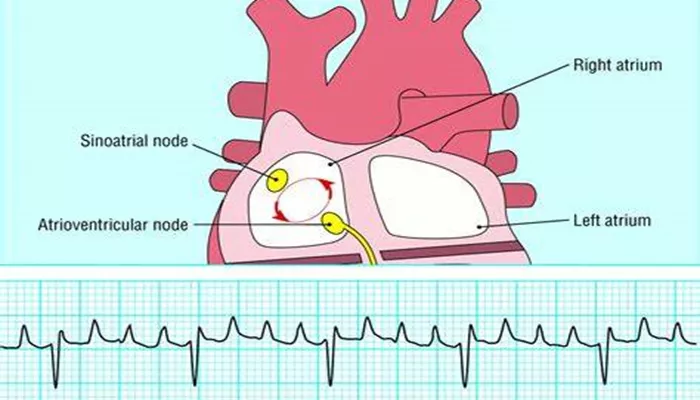Digoxin is a medication derived from the leaves of the foxglove plant. It has been used for over two centuries to treat various heart conditions, particularly heart failure and atrial fibrillation. While digoxin can be effective in controlling heart rate and improving cardiac output, it can also lead to significant side effects, including arrhythmias. Understanding the relationship between digoxin and arrhythmias is crucial for healthcare providers managing patients on this medication.
Arrhythmias are irregular heartbeats that can result in a range of symptoms, from palpitations to severe complications such as stroke or cardiac arrest. The risk of developing arrhythmias increases with digoxin use, particularly when dosages are not properly managed or when patients have certain underlying health conditions. This article will explore how digoxin can cause arrhythmias, the mechanisms behind this effect, and the importance of careful monitoring.
Mechanisms of Action
Digoxin works primarily by inhibiting the Na+/K+ ATPase enzyme in cardiac myocytes. This inhibition leads to an increase in intracellular sodium levels, which subsequently increases intracellular calcium through the sodium-calcium exchanger.
The increased calcium concentration enhances cardiac contractility, which is beneficial in heart failure. However, the changes in electrolyte levels can also predispose patients to arrhythmias.
Electrolyte Imbalance
One of the significant ways digoxin can lead to arrhythmias is through its effect on electrolyte levels, particularly potassium and calcium.
Hypokalemia: Low potassium levels can increase the effects of digoxin, leading to toxicity. When potassium levels are low, digoxin’s binding to the Na+/K+ ATPase increases, enhancing its effects on the heart. This can lead to increased automaticity in the myocardium, resulting in arrhythmias.
Hypercalcemia: Elevated calcium levels can also increase the risk of digoxin-induced arrhythmias. High calcium enhances cardiac contractility but can also lead to increased excitability of cardiac myocytes, resulting in the development of ectopic beats.
Direct Cardiac Effects
Digoxin can alter the electrical conduction properties of the heart. It affects the atrioventricular (AV) node, which is responsible for conducting impulses from the atria to the ventricles. Digoxin can increase vagal tone and slow conduction through the AV node, which can be beneficial in controlling heart rate in atrial fibrillation. However, in some cases, this slowing can lead to complete heart block, especially in patients with existing conduction abnormalities.
Types of Arrhythmias Associated with Digoxin
Atrial Fibrillation
In patients with atrial fibrillation, digoxin is often used to control the ventricular rate. However, if digoxin levels become too high, it can lead to further worsening of the arrhythmia. A rapid ventricular response may occur, leading to symptoms such as palpitations, fatigue, and shortness of breath.
Premature Ventricular Contractions (PVCs)
Digoxin can cause premature ventricular contractions, which are extra heartbeats originating in the ventricles. PVCs are common and may not cause symptoms in all patients. However, in some cases, they can lead to more serious arrhythmias, especially if they occur in a pattern known as “runs” or “couplets.”
SEE ALSO: What Causes Arrhythmia in A Child?
Digoxin Toxicity and Arrhythmias
Digoxin toxicity is a critical concern when using this medication. Symptoms of toxicity include nausea, vomiting, confusion, and visual disturbances. Most importantly, toxicity can lead to serious arrhythmias, including:
Ventricular Tachycardia (VT): This is a fast, abnormal heart rhythm originating in the ventricles. It can result in hemodynamic instability and may require urgent treatment.
Ventricular Fibrillation (VF): This is a life-threatening arrhythmia characterized by disorganized electrical activity in the ventricles, leading to ineffective heart contractions. It requires immediate resuscitation.
Atrioventricular Block: High levels of digoxin can cause varying degrees of AV block, leading to bradycardia and potentially dangerous rhythms.
Risk Factors for Digoxin-Induced Arrhythmias
Certain patient characteristics and clinical situations can increase the risk of developing arrhythmias while on digoxin:
Renal Dysfunction: Impaired kidney function can lead to decreased clearance of digoxin, resulting in higher serum levels and increased risk of toxicity.
Age: Older patients often have altered pharmacokinetics and may be more sensitive to digoxin. They are also more likely to have coexisting conditions that affect heart rhythm.
Electrolyte Abnormalities: As discussed, imbalances in potassium and calcium levels can significantly increase the risk of arrhythmias in patients taking digoxin.
Concurrent Medications: Certain drugs can interact with digoxin, either increasing its levels or affecting its efficacy. For example, diuretics can lead to hypokalemia, increasing the risk of digoxin toxicity.
Monitoring And Management
Due to the potential for digoxin-induced arrhythmias, regular monitoring of digoxin levels, renal function, and electrolytes is crucial.
Digoxin Levels: Therapeutic levels are typically between 0.5 and 2.0 ng/mL. Levels above this range can indicate toxicity.
Electrolytes: Regular checks of potassium and magnesium levels should be conducted, especially if patients are on diuretics or other medications that can affect these electrolytes.
Clinical Assessment: Patients should be monitored for symptoms of arrhythmias, such as palpitations, dizziness, or syncope. Any new symptoms should prompt further evaluation.
Managing Arrhythmias
If arrhythmias occur, several management strategies can be employed:
Adjusting Digoxin Dose: If arrhythmias are attributed to digoxin, reducing the dose or discontinuing the medication may be necessary.
Correcting Electrolyte Imbalances: Replacing potassium or magnesium as needed can help stabilize the heart’s electrical activity.
Antiarrhythmic Medications: In some cases, additional medications may be required to control arrhythmias.
Monitoring: Continuous telemetry monitoring may be indicated in more severe cases to detect arrhythmias early.
Conclusion
While digoxin can be an effective treatment for certain cardiac conditions, it carries a significant risk of causing arrhythmias. Understanding the mechanisms by which digoxin affects heart rhythm, as well as recognizing the risk factors and monitoring requirements, is essential for safe use. Healthcare providers must balance the benefits of digoxin therapy against the potential for serious arrhythmias, ensuring that patients receive optimal and safe care.
Related topics:


